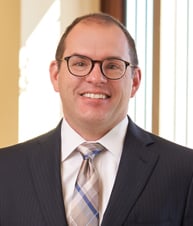HD Silicon Solutions LLC v. Microchip Technology, Inc., No. 2023-1397 (Fed. Cir. (PTAB) Feb. 6, 2025). Opinion by Lourie, joined by Stoll and Cunningham.
Microchip filed an IPR petition challenging the claims of a patent owned by HD Silicon Solutions (HDSS) relating to a local interconnect layer in an integrated circuit. In the IPR, the parties disputed the construction of the term “comprising tungsten.”
The Patent Trial and Appeal Board issued a final written decision construing the term to mean any form of tungsten, including both elemental tungsten and tungsten compounds. The Board then found claims 1–7 and 9–17 unpatentable as obvious, and HDSS appealed.
On appeal, HDSS challenged both the Board’s claim construction and the Board’s motivation-to-combine findings as to certain dependent claims.
The Federal Circuit held that the Board erroneously construed “comprising tungsten” but deemed the error harmless. The court explained that the claim language suggested that the patent “uses explicit language to refer to a compound when a compound is intended, and when no such language is included, only the elemental form is intended.” Thus, a claim to “tungsten,” on its own, referred to elemental tungsten. The court ruled that the specification and prosecution history supported the same view because they never mention a tungsten compound and “exclusively refer[] to tungsten as a singular component, i.e., as an element.”
Despite the erroneous construction, the Federal Circuit affirmed the finding of unpatentability because “the Board’s obviousness findings are equally supported regardless whether [the prior art]’s elemental tungsten or tungsten-silicide layers are used to render” the claims obvious.
Lastly, the Federal Circuit disagreed with HDSS’s challenge to the Board’s motivation-to-combine findings. The court noted that the Board “thoroughly considered HDSS’s arguments … and reasonably rejected them.” Also, “the Board provided thorough and well-reasoned explanations, relying on the testimony of Microchip’s expert,” for why a person of ordinary skill in the art would have been motivated to combine the references.
Wuhan Healthgen Biotechnology Corp. v. International Trade Commission, No. 2023-1389 (Fed. Cir. (ITC) Feb. 7, 2025). Opinion by Moore, joined by Chen and Murphy (sitting by designation).
Ventria Bioscience filed an ITC complaint alleging that Healthgen’s importation of clinical and medium grade recombinant human serum albumin (rHSA) products infringe a patent owned by Ventria. The ALJ issued an initial determination finding that Healthgen infringed the patent and that Ventria satisfied the domestic industry requirement.
Healthgen petitioned for review, and the Commission affirmed. The Commission found infringement as to Healthgen’s clinical grade products (but not its medium grade products) because they contain “less than 2% aggregated albumin” as required by the claims. In support, the Commission relied on SEC-HPLC data from Healthgen showing measured aggregation levels of 1.1%.
The Commission also affirmed the ALJ’s finding that Ventria satisfied the economic prong of the domestic industry requirement based on a Ventria rHSA product called Optibumin. Healthgen appealed.
On appeal, Healthgen argued that the Commission erred in relying on the SEC-HPLC data because the data does not reflect aggregated albumin levels at the time of importation. Rather, according to Healthgen, the data “reflects when aggregated albumin is lowest” and “fails to account for increased aggregation during storage and shipping such that the products are no longer infringing at the time of importation.”
The Federal Circuit disagreed with Healthgen and ruled that substantial evidence supported the Commission’s finding. The court noted that it was undisputed that SEC-HPLC is a reliable test to measure aggregation levels, and that the Commission’s finding was supported by expert testimony, peer-reviewed literature, and Healthgen’s communications to customers.
As to the economic prong, Healthgen argued that Ventria’s investments were too small to be significant and substantial. The Federal Circuit disagreed. First, it was undisputed that “all of Ventria’s investments and activities related to researching, developing, and commercially producing Optibumin occurred within the United States.” The Federal Circuit explained that while “it may have been relatively inexpensive for Ventria to develop and produce its patented product,” that “does not alone preclude a finding that Ventria did in fact establish a domestic industry in that product.”
The court continued: “Small market segments can still be significant and substantial enough to satisfy the domestic industry requirement. A finding of domestic industry cannot hinge on a threshold dollar value or require a rigid formula; rather, the analysis requires a holistic review of all relevant considerations that is very context dependent.” In this case, “though the dollar amounts of Ventria’s Optibumin investments are small, the Commission found all of the investments are domestic, all market activities occur within the United States, and the high investment-to-revenue ratios indicate this is a valuable market.” Thus, substantial evidence supported the Commission’s finding that Ventria satisfied the domestic industry requirement.
Trudell Medical International Inc. v. D R Burton Healthcare, LLC, Nos. 2023-1777, -1779 (Fed. Cir. (EDNC) Feb. 7, 2025). Opinion by Moore, joined by Chen and Stoll.
Trudell sued D R Burton for infringement of a patent relating to portable devices for performing oscillatory positive expiratory pressure therapy. After the close of all discovery, D R Burton submitted a seven-page declaration from its expert on noninfringement, Dr. Collins. Trudell sought to exclude Dr. Collins from trial because he did not timely serve an expert report on noninfringement. But the district court allowed Dr. Collins to testify, and the jury returned a verdict finding the patent claims valid and not infringed.
After the verdict, Trudell filed a renewed motion for judgment as a matter of law (JMOL) of infringement or, in the alternative, a new trial. The district court denied the motion.
Trudell appealed, arguing that the district court should have excluded Dr. Collins’ testimony on noninfringement because he did not timely serve an expert report and his failure to do so was neither substantially justified nor harmless. The Federal Circuit agreed, holding that “the district court abused its discretion in allowing noninfringement testimony by Dr. Collins.”
The Federal Circuit also ruled that, even if Dr. Collins’ seven-page declaration served after the close of discovery is deemed “a timely filed, fully compliant expert report, it failed to fully disclose the noninfringement testimony given at trial.” Additionally, the district court abused its discretion by failing to exclude Dr. Collins’ testimony as unreliable under Federal Rule of Evidence 702, as his “noninfringement declaration was untethered from the district court’s claim constructions.”
Addressing the district court’s denial of Trudell’s motion for JMOL of noninfringement, the Federal Circuit affirmed the denial because even without Dr. Collins’ testimony, “the jury was free to discredit the testimony of Trudell’s expert … and find that Trudell failed to meet its affirmative burden to prove infringement.”
The Federal Circuit did, however, reverse the district court’s denial of Trudell’s motion for a new trial. The Federal Circuit held that “the harmful and prejudicial admission of Dr. Collins’ testimony warrants a new trial on infringement.”
Lastly, the Federal Circuit considered Trudell’s request that the case be reassigned to a different judge on remand. The Federal Circuit agreed: “This case is unique in that, … from the moment this case fell in his lap, the trial judge’s statements indicate that he did not intend to manage a fair trial with respect to the issues in this case.” The judge also made statements at trial in the presence of the jury that “undermined the appearance of fairness,” and the Federal Circuit saw “sufficient reason to believe that the trial judge’s conviction to quickly terminate the case will be no different on remand.”
Thus, the Federal Circuit remanded the case for a new trial before a different judge.

